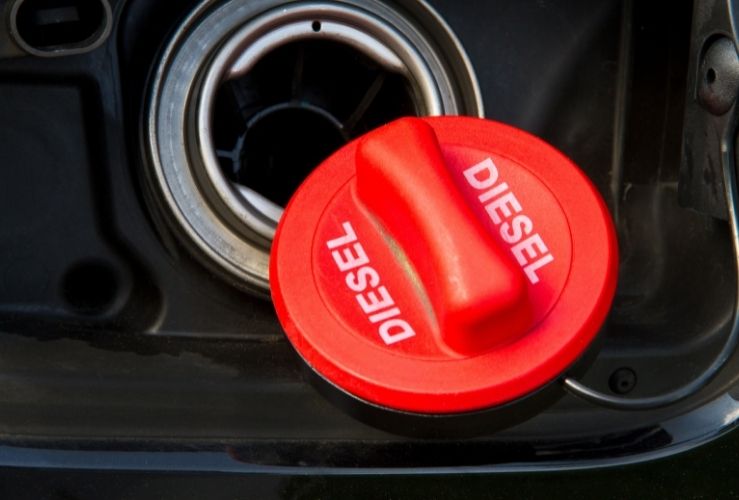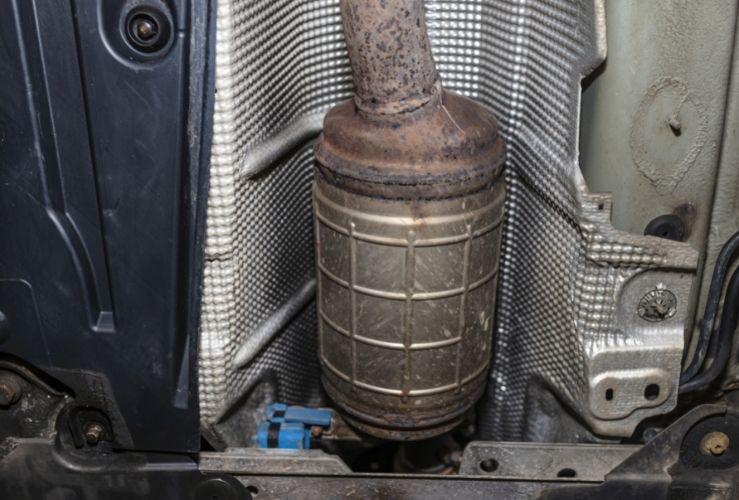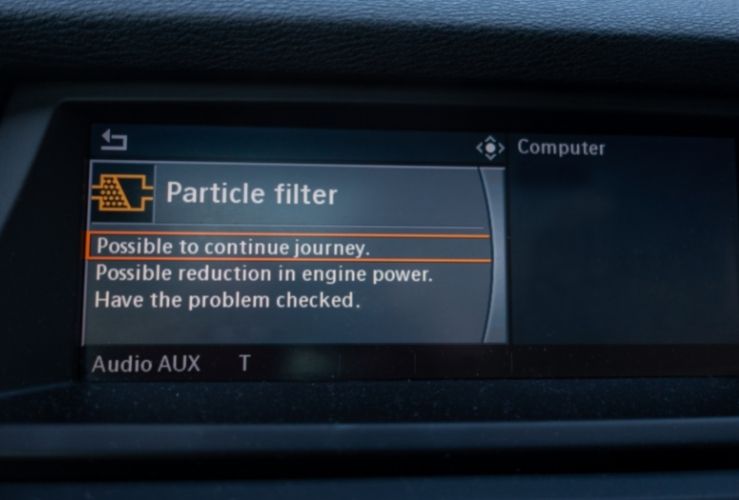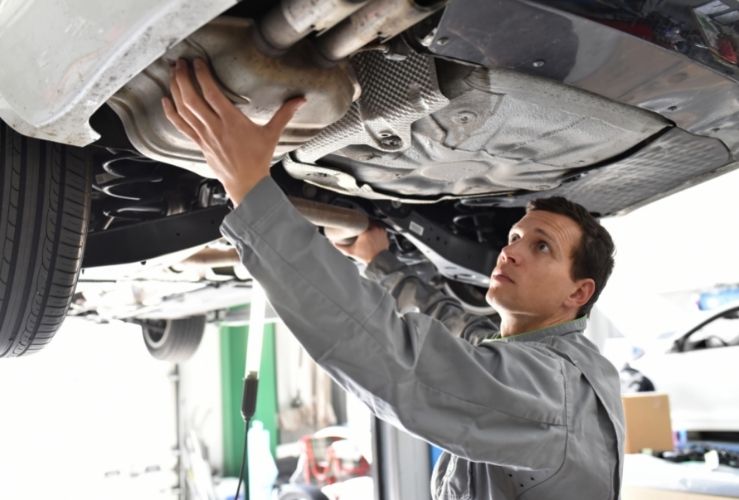Why is maintaining your diesel particulate filter (DPF) critical?
If you have a diesel vehicle, chances are it has a diesel particulate filter (DPF).
This device prevents harmful particles emitted in your exhaust system from entering the atmosphere, ensuring that your vehicle meets emissions standards, but it must be properly maintained. Failure to do this could result in costs that far exceed the savings of running a diesel as opposed to a petrol vehicle.
What is a DPF on a car?
Diesel engines burn fuel differently from petrol cars; Diesel fuel produces contaminants that are harmful to humans, contributing to cardiovascular and respiratory problems.
To reduce emissions if these contaminants, since 2009 diesels have been fitted with diesel particulate filters (DPFs), which capture around 80% of the soot produced by diesel engines.
A DPF not only traps and hold particulates but it can also burn them, turning them into a harmless ash that is emitted through your exhaust system. This soot must be burned off in order for the DPF filter to continue working properly.
It does via DPF regeneration; burning the particles at a high temperature.
There are two types of DPF regeneration. Both require the exhaust gases to reach a very high temperature.

Passive DPF regeneration
Through a process called ‘passive DPF regeneration’ your vehicle will automatically regenerate the DPF. But it can only happen if a diesel car is driven at higher speeds for a sustained period. This is because, for passive regeneration to work, it requires the prolonged heat from the engine in order to burn off the soot.
Driving on motorways or A-roads for 10-15 minutes at above 40mph should be sufficient for DPF regeneration to take place.
Cleaning out the ash
The process of burning the soot in the DPF filter leaves an ash residue, which builds up over time and needs to be removed.
The vehicle cannot do this by itself - it needs to be taken to a garage for specialist cleaning. However, you should only need to do this about every 100,000 miles - which is roughly half the lifespan of the vehicle.

Active regeneration
Many diesel cars are not driven for long enough at high enough speeds for passive regeneration to work.
For this reason car makers developed 'active regeneration' which works by injecting extra fuel into the engine in order to raise the exhaust temperature and burn off the soot.
The vehicle's engine management system will detect a DPF blockage and then begin the active regeneration process.
How often does active regeneration happen?
Most diesel cars with active regeneration will run the process every 300 miles or so.
It takes 5-10 minutes to complete, but if the car isn’t driven for long enough, the process may be interrupted - causing a number of issues.
Signs active regeneration is taking place in your vehicle
- Faster engine idle speed
- Cooling fans running continuously
- Auto stop/start no longer works
- Fuel consumption increases
- Unpleasant acrid smell from exhaust
- A change to engine tone

Blocked filter warning light
If you see a DPF warning light showing the DPF is blocked, you should drive the vehicle at speeds of 40mph or more for around 10 minutes. This should solve the issue.
However, if you continue to make short, stop/start journeys the soot will continue to build up.
This could result in increased emissions, poorer performance or even the activation of 'limp-home mode' or 'restricted performance mode' - which will in turn further restrict performance.
Once the vehicle has switched into this mode, taking it for a 40mph 10 minute drive won’t be enough to burn off the soot.
Always refer to the vehicle’s manual before performing soot clearance techniques and any work must be carried out by a qualified mechanic
Other soot blockage causes
Sometimes soot may not be burnt off in the regeneration process, creating a blockage.
This regeneration failure may be caused by dirty fuel injection nozzles; residues in the exhaust gas recirculation system; poor quality fuel; as well as frequent short journeys.
Such a blockage will require a visit to a garage equipped to deal with DPF blockages.
Forced filter regeneration at a garage (DPF filter cleaning)
Once a DPF has reached this stage of repair, you'll need to visit a garage that is required to carry out a 'forced' filter regeneration (or DPF filter cleaning), which costs about £100 plus labour charges.
They will use special diesel particulate filter cleaner solvents and equipment.
It's not guaranteed to work, but it should mean the DPF is in a condition whereby it regenerates by itself.

How much are DPF replacement costs?
In rare cases, the DPF may need to be replaced, which can cost between £1,000 and £3,500, depending on the make, plus labour.
Are there cheaper DPFs available?
It is best to purchase a new DPF from your vehicle's manufacturer.
There are cheaper alternatives available, but these must meet 'Type Approval' in order to work properly and for you to avoid additional repair costs.
DPF additives on some diesel vehicles
DPFs are installed near the engine so they benefit from the additional heat, which assists the regeneration process.
However, some cars have DPFs which require an additive called Eolys™ fluid, which reduces the ignition temperature of the soot so that regeneration can take place at lower temperatures.
Eolys™ fluid needs to be topped up once every 70,000 miles or so. It costs about £200 plus labour to be replaced.
If you see a light showing the additive is running low, don’t ignore it because your DPF will become blocked very soon afterwards, and you'll need to pay a garage to fix it.
Why can’t I get my DPF removed?
As an alternative to repair, some motorists may be tempted to have the DPF removed and to have the engine management software reprogrammed.
However, this is illegal under the Road vehicles (Construction and Use) Regulations, because the vehicle will no longer meet the emissions standard it was built for.
DPF removal may also invalidate vehicle insurance since it makes it illegal for use on the roads.
When running a diesel becomes expensive
Being forced to replace your DPF can wipe out any savings you've made by running a diesel, which is why it's so important to keep the device properly maintained.
DPF concerns when buying a used diesel vehicle
The older a diesel gets and the more miles it's done, the greater the chances it needs a DPF replacement - so that apparent bargain diesel you've seen may not be such a prudent purchase.
Such a large cost can erase the benefits of lower fuel consumption over the long term, even if the vehicle is used frequently for long journeys (diesels are less economical if used for regular short trips).
If you're considering buying a diesel for shorter trips, you'd be better off with a model that does not have a diesel particulate filter.
DPFs and passing your MOT: Do I have to have a working DPF to pass my MOT?
Since 2014, having a working DPF has been part of the MOT. A faulty DPF means a failed MOT.
Removal of a DPF will cause a warning light to show, which is an automatic MOT fail.
Aside from ensuring that your DPF is functioning properly, there are a number of other ways you can look to extend the life of your car.
Here's some more advice on how to look after your vehicle's engine.




